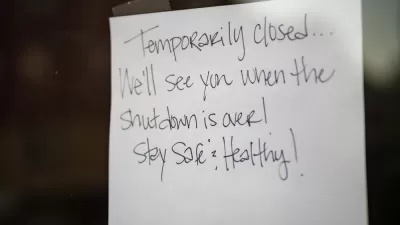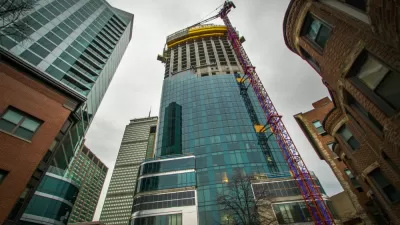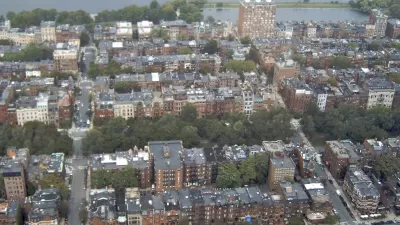Better architecture has been a consistent theme of the tenure of Boston Mayor Marty Walsh. The city's first comprehensive plan since 1965 could be the key tool in producing the desired results.
Dante Ramos writes an op-ed describing, and responding to, the emerging planning agenda for Boston Mayor Marty Walsh. Among the largest of those initiatives is the launch of Imagine Boston 2030, the city's first comprehensive planning process in 50 years.
In a separate Catherine Carlock reports the early details of Imagine Boston 2030, which so far has set the following timetable for planning and adoption:
"The Imagine Boston 2030 website outlines a six-phase timeline for the planning process: establishing baseline conditions this summer and fall; setting visions, principles and goals by this fall; drafting a formal blueprint by spring 2016; determining content development throughout the winter and spring of 2016; drafting recommendations to the mayor by late 2016 and into 2017 and a final plan adoption by summer 2017."
As noted by Ramos, Mayor Walsh announced the Imagine Boston 2030 process at the Innovative Design Alternatives Summit event earlier in May. The theme of the event follows earlier announcements by Mayor Walsh that called for better architecture in the city.
Ramos's article also includes commentary on the likelihood of Boston improving its planning process and its architectural outcomes—according to Ramos, the two go hand and hand. "Alas, architects can’t fix what ails Boston architecture. Only the mayor can," writes Ramos. "Walsh’s master plan could help. If it reduces risks by setting clear, reasonable parameters for what developers can do without seeking an indulgence from the city, they may take chances on new architects and new ideas."
FULL STORY: Mayor Walsh finds his urban-planning vision

Americans May Be Stuck — But Why?
Americans are moving a lot less than they once did, and that is a problem. While Yoni Applebaum, in his highly-publicized article Stuck, gets the reasons badly wrong, it's still important to ask: why are we moving so much less than before?

Using Old Oil and Gas Wells for Green Energy Storage
Penn State researchers have found that repurposing abandoned oil and gas wells for geothermal-assisted compressed-air energy storage can boost efficiency, reduce environmental risks, and support clean energy and job transitions.

Placekeeping: Setting a New Precedent for City Planners
How a preservation-based approach to redevelopment and urban design can prevent displacement and honor legacy communities.

San Francisco’s Muni Ridership Grew in 2024
The system saw its highest ridership since before the Covid-19 pandemic, but faces a severe budget shortage in the coming year.

Colorado Lawmakers Move to Protect BRT Funding
In the face of potential federal funding cuts, CDOT leaders reasserted their commitment to planned bus rapid transit projects.

Safe Streets Funding in Jeopardy
The Trump administration is specifically targeting bike infrastructure and other road safety projects in its funding cuts.
Urban Design for Planners 1: Software Tools
This six-course series explores essential urban design concepts using open source software and equips planners with the tools they need to participate fully in the urban design process.
Planning for Universal Design
Learn the tools for implementing Universal Design in planning regulations.
Heyer Gruel & Associates PA
City of Moreno Valley
Institute for Housing and Urban Development Studies (IHS)
City of Grandview
Harvard GSD Executive Education
Salt Lake City
NYU Wagner Graduate School of Public Service
City of Cambridge, Maryland





























